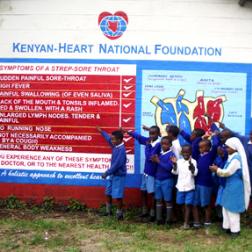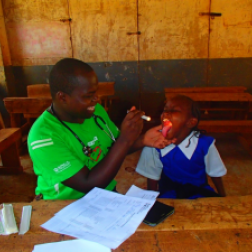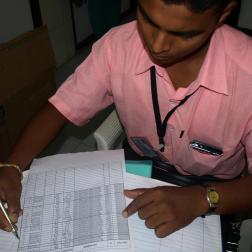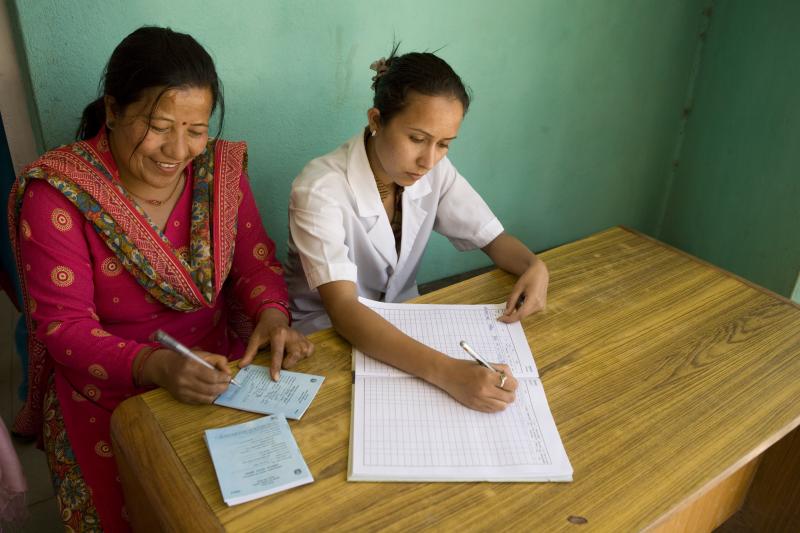RHD Registers
A disease register is a list of people who have been diagnosed with, or are suspected of having a disease. RF/RHD registers - a list of people with RF/RHD and some of their clinical details - were established in the United States in the 1950s. These registers supported delivery of newly developed regimes for antibiotic secondary prophylaxis and contributed to the declining burden of RHD in the USA. By the 1970s the WHO had adopted a register based approach and registers remain a critical part of RHD control. Register based programs have assisted with the provision of prophylaxis in many communities across the world.
An RF/RHD register can assist with routine assessment and surveillance, the recording of prophylaxis delivery, the recall of patients who are due or miss doses of BPG, and improve health education and health promotion programs. Registers also provide some information about the burden of disease; though the quality of data is dependent on the quality of register management.
Benefits of RF / RHD Registers
|
For people living with RF/RHD |
For health systems |
|
|
“The effectiveness of a register based program depends on the accuracy of the database, how well it is maintained and how well the information is disseminated”
Establishing a register
Minimum data set
There is no current global consensus about what information should be collected and stored on an RHD register. Some programs have established their own data standards.
Privacy, confidentiality and data security
Use, ownership and protection of health data are complicated issues worldwide. Many settings have struggled to establish protocols to manage confidential health information. For RHD registers privacy requirements may influence which data is collected and how it can be used. It is helpful to seek advice as early as possible when establishing or running an RHD register to ensure that your program complies with local laws, standards and procedures. You may need to seek input from ethics committees, health authorities or other register based programs. Data which is accidently collected inappropriately (without sufficient consent or safeguards) may not be able to be used.
Education and Training
Staff will require training to use and maintain the RHD register. The more complicated the system the more time it will take for people to become familiar with it. Integrating the register within existing systems will limit the number of systems new and visiting workers will need to become familiar with using.
|
Additions |
Status Changes |
|
1. After an episode of RF People at risk of RF/RHD should be enrolled into the register at the earliest possible opportunity: the first episode of RF. This requires clinical staff in primary and secondary care to know how to diagnose suspected / confirmed RF, that the register exists, contact details and the information required for enrollment. The date of first symptoms (rather than the date of clinical presentation) should be recorded.
If possible it is simplest to encourage clinicians to contact the register about all cases of RF (suspected and confirmed, first episode and recurrences). This reduces the decision making burden for individual clinicians and provides as much information as possible to your program. Information about recurrences can also be added to individual clinical records. Clinical review of cases reported to the register may provide valuable support to primary care clinicians and improve data quality. |
1. Prophylaxis ceased or completed Treatment and management guidelines should be clear about the duration of secondary prophylaxis and this will be guided by the priority management categories. The person’s history of RF and the presence of heart valve damage associated with RHD will guide the decision to cease secondary prophylaxis.
Injections of BPG - or other prophylaxis - should be stopped when clinically appropriate. Systems are needed to make sure that prophylaxis is reviewed when treatment is complete. The decision to stop treatment by specialist clinicians needs to be clearly communicated to teams responsible for administering the prophylaxis. In a review of the Australian Northern Territory program two patients continued to receive secondary prophylaxis, despite clinicians deciding BPG was no long required.
The register should record whether the planned duration of secondary prophylaxis was delivered (according to local guidelines), whether treatment was stopped early following expert clinical review or whether the treatment was stopped without clinical consultation. |
|
2. After first presentation of symptomatic RHD Clinicians who diagnose RHD need to be able to contact the register coordinator to enroll people living with RHD into the register. Advanced cases of RHD may be identified late in adults and, rarely, the elderly. Therefore, adult clinicians, midwives, and primary care staff will need to know to contact your control program.
Ideally, clinicians will also be able to contact the register to check, update or confirm clinical information, including delivery of secondary prophylaxis, planned follow up, referrals for specialist review or surgical evaluation. |
2. Inactive All programs will lose some people to follow up – due to unreported deaths, unplanned travel, and unplanned changes in contact details or active avoidance. These people continue to be epidemiologically relevant, even if secondary prophylaxis cannot be delivered. The removal of data completely from a register will limit the ability of the control program to report epidemiological findings. An ‘inactive’ category allows for data to be retained without active care delivery. You will need to define ‘lost to follow up’ |
|
3. Following screening Echocardiographic screening programs – outlined in Chapter 19 – should be closely aligned to the RF/RHD register to ensure that people with RHD identified during screening receive appropriate care and follow up. |
3. Death Recording deaths of individuals on the RHD register is important in order to:
In some places it may be possible to access hospital death records to identify people with RHD who have died. Primary care clinicians, midwives, hospitals and communities can be encouraged to contact the program about people who have died while on the RHD register or receiving secondary prophylaxis. As much information as possible about the cause of death should be recorded. |
|
4. Transfer in from another program In some countries people living with RHD are a mobile population who move frequently for work, health care, family or traditional responsibilities. You will need a protocol for accepting registrations from other programs and for enrolling people who arrive unexpectedly seeking secondary prophylaxis. These may include refugees and new immigrants moving from areas with a high burden of RHD and limited health infrastructure.
Other sources of information for the register may include: notifications, hospital discharge records, clinical letters echocardiogram reports or professional correspondence. These records may also provide valuable information about the clinical status of people already on the register. |
4. Transfer out to another program People on your register may need to move outside the scope of your program. When travel or relocation is planned or expected you should develop plans to identify a new provider of secondary prophylaxis and follow up. Options may include:
|
Some programs choose to include factors relevant to primordial prevention on registers, including socioeconomic indicators, children in the family or other details. Even when it’s not possible to demonstrate causation, understanding the demographic and socioeconomic characteristics of people presenting with RF/RHD is helpful for targeting services and intervention for primordial prevention.
Strengthen health systems
Strengthening referral systems
Referrals between primary, secondary and tertiary health are a risky period for loss of clinical information or breakdown in continuity of care. The transition from primary to secondary and tertiary care can be overwhelming for patients who may need to travel to large cities, be assessed in unfamiliar languages and be separated from community support structures. Transport may be difficult or prohibitively expensive. Patients may be ‘lost’ during the referral process, particularly in settings without clearly established pathways for escalating care. These problems can be even more severe when patients are being referred or treated internationally .






